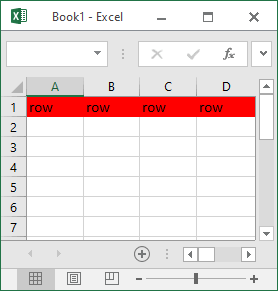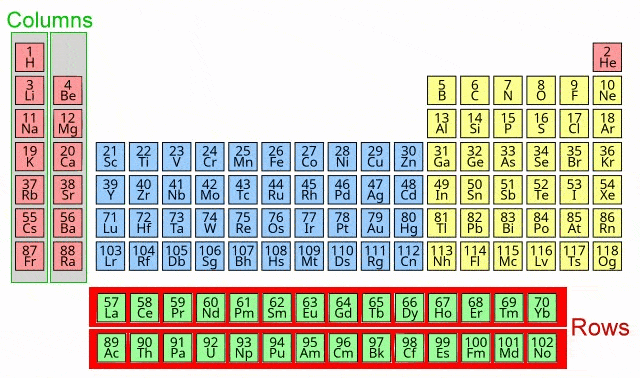Columns vs rows: What's the difference?
Difference between a column and row
The key difference between columns and rows is that a column arranges data vertically from top to bottom, while a row arranges data horizontally from left to right.
Rows and columns are common concepts in computer science and data analytics. These terms are also used in common parlance to describe the arrangements of everyday things.
Row and column definitions
The definition of a row is, “any set of objects or data that is aligned in a way that each one can be described as being to the left or right of another.”
In contrast to a row, columns organize items in a top-to-bottom fashion. In contrast to a row where items are to the left or right of another, all items in a column are described as either above or below another.
Top 5 row versus column differences list
Here are the top five differences between rows and columns in terms of how they organize data and objects:
- Items in row are aligned from left to right, while columns are aligned from top to bottom.
- A row is a horizontal alignment of data, while a column is vertical.
- Data in a row contains information that describes a single entity, while data in a column describes a field of information all entities possess.
- Objects placed in a row typically face forward, while objects in a column are aligned head to tail.
- Items in a row are positioned side-by-side, while in a column they are above and below one another.
5 examples of columns and rows
Sometimes a real-world example can drive a concept home better than a precise definition. Here are five examples of everyday objects people describe as being organized in a row:
- seats in a theater are organized in rows;
- a group of ducklings swim together in a row;
- a library has rows of books on shelves;
- a row of trees may line a parkway; and
- a row of houses are said to line a street
Column examples
Here are five examples of how the term column is used in common parlance:
- The text of a newspaper article is broken up into columns, thus the term “newspaper column.”
- Ancient Greek buildings are held up by various types of columns.
- Flames from a chimney or bonfire are said to create a column of smoke.
- An elevator shaft is a column of vertical movement.
- A set of military vehicles that follows in formation is said to be a column.
Rows and columns and tables
The concepts of rows and columns becomes especially powerful when the two concepts are combined.
For example, the periodic table of elements uses both rows and columns to help scientists visualize the similarities between elements that sit on the same row, and the commonalities between elements that reside in the same column.
Columns, rows and spreadsheets
Spreadsheet software, such as Microsoft Excel, Google Sheets, Apple Numbers and OpenOffice Calc, allow users to organize data into columns and rows.
A common pattern in spreadsheet software is to put a different date in each column, and list all of the days of a week or a month from the top of the spreadsheet to the bottom. Then in each row expenses or sales are listed corresponding to the date of the row. Spreadsheet software is then capable of performing various addition and subtraction functions to provide more meaning to the data.
| Comparator | Rows | Columns |
| Description | Horizonal collection of related data | Vertical collection of a common field |
| Alignment | Side by side; horizontal | Top to bottom; vertical |
| Relationship | Left to right | Above or below |
| Direction | Forward facing | Head to tail |
| Analysis | Sums are shown below | Sums are shown to the right |
| Identifiers | Typically numeric | Typically letters |
| Database access | NoSQL databases will access documents by row | Relational databases lookup data based on unique column ids |
| RDBMS names | Record or entity | Field |
| Examples | A row of seats; a row of ducklings; a row of trees | A newspaper column; a column of smoke; a column of military vehicles |
Columns or rows in databases
Relational databases also rely heavily on the idea of columns and rows.
A combination of database columns and rows is knowns as a table.
Each database table row has the same set of data fields. For example, each row of a person table would include a first name, last name, date of birth and email address. All of the fields in a table row are said to make up a complete “entity.”
If you query every row in a table for a single field, such as the first name from the person table, the results return as a column of data.
The difference between rows and columns? For databases, a row usually describes the properties or fields of a single entity. A column will represent a field that is common to all entities, not just one.https://t.co/OJO2q2KU1c pic.twitter.com/BlG7o0dUJb
— Cameron McKenzie (@cameronmcnz) May 25, 2022
Choosing between rows and columns
Traditional databases, such as MySQL, PostgreSQL, DB2 and Oracle, were optimized for column-based access. This means data is accessed through a primary key, which is a unique value each row possesses. Relational databases are very efficient at column-based searches that extract unique fields of interest from a row.
However, many social media websites have found that row-based access is more efficient than access based on a primary key column. This has led to an emergence of popular NoSQL databases such as MongoDB, Cassandra, HBase and Redis.
While the concept of rows and columns is prolific in the world of math, data analytics, chemistry and computer science, the concept is very egalitarian and permeates our daily life as well.
One can query rows and columns in a database, and deduce information from how elements are organized in columns and rows in a periodic table. At the same time, one can also admire a row of ducks as they swim by, and be humbled by the beautify of the Corinthian or Doric columns that hold up an ancient Greek building.
1Animated columns vs. rows differences and similarities Gif adapted from: Periodic table image: User:Double sharp, based on File:Simple Periodic Table Chart-en.svg by User:Offnfopt, CC BY-SA 4.0 via Wikimedia Commons






